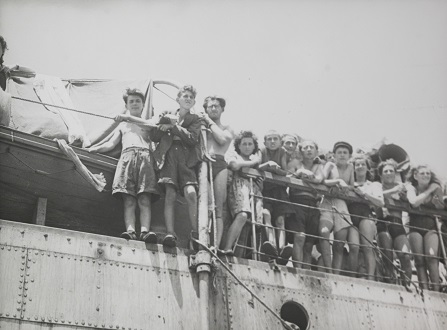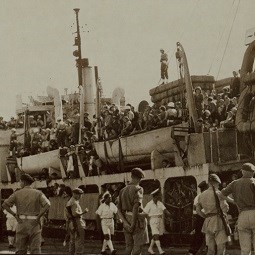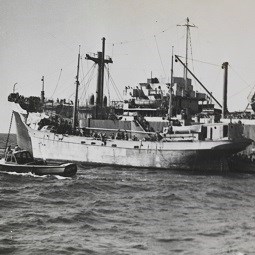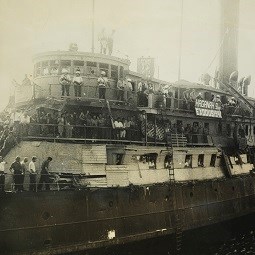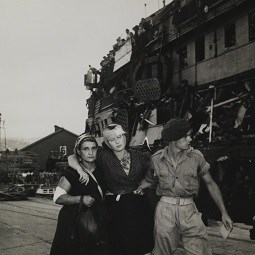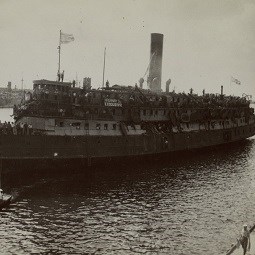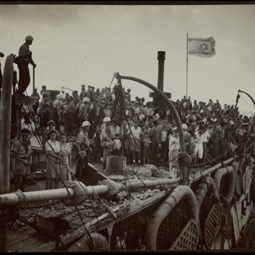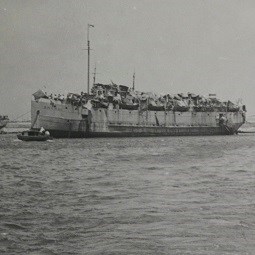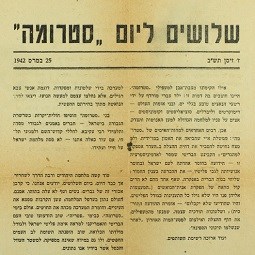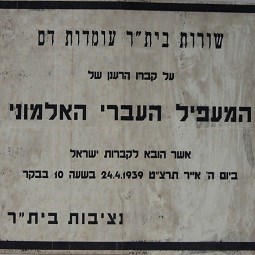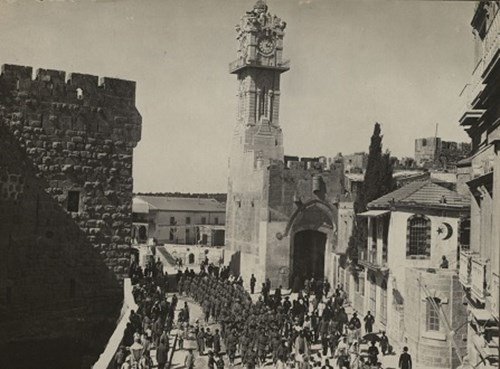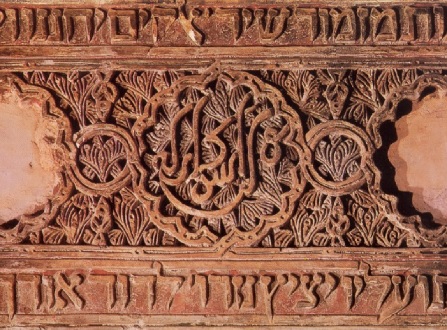Illegal Immigration
Beginning in 1934, the Zionist movement and the Yishuv - the Jewish Community in Mandatory Palestine - began an organized effort to bring Jewish immigrants to the Land of Israel by illegal means. This Illegal immigration was known in Hebrew as Ha'apalah or Aliyah Bet ("Immigration B"). It started following Hitler’s rise to power in Germany and lasted until the establishment of the State of Israel.
This endeavor was the most substantial effort worldwide to rescue Jews from antisemitism and extermination in the Holocaust and during its later stages it also enabled Holocaust survivors to leave the countries they were in at the time. The illegal immigration operations increased the Zionist consciousness of world Jewry and raised awareness among the international community of the need to establish a Jewish state. The coverage given to the issue of Jewish refugees in the world media accelerated the political processes which eventually culminated in the establishment of the State of Israel.
While the Zionist movement sought to save as many Jews as possible from Europe and bring them to Mandatory Palestine, the British authorities granted only a limited number of immigration permits (certificates) to Jews. It was therefore decided to circumvent the restrictions and promote illegal immigration by sea. The main organizations behind this illegal immigration were HeHalutz, which became the Mossad LeAliyah Bet ("Institution for Immigration B"), and the Revisionist movement.
"HaBriha" - The Escape
With the end of World War II an illegal mass migration of Jewish Holocaust survivors began from Eastern Europe to ports in the Mediterranean, with the aim of reaching the Land of Israel. This migration was called HaBriḥa or the "The Escape Movement”. While it began spontaneously, members of different Zionist movements gradually became involved in the efforts to bring these people to the Land of Israel. Most of the refugees came from Poland and the Soviet Union and endured arduous and long journeys to the ports of Italy and France. On their way, many of them spent time in Displaced Persons camps in Germany, Austria and Italy. From 1944 to 1948, about 250,000 to 300,000 Jewish refugees passed through these European escape routes. Many of them immigrated to Mandatory Palestine on illegal immigration ships, and many more arrived after the establishment of the state or settled in other countries.
HaBriha began in 1944 with local initiatives by partisans and Zionist youth movement members. The number of emigrants kept growing and included many orphaned children, single young people and families. The refugees organized in collectives that provided them with shelter, a sense of belonging and family. The soldiers of the Jewish Brigade stationed in Europe assisted greatly in "The Escape". From 1945, the Mossad LeAliyah Bet led the activity with the assistance of representatives of the survivors as well as emissaries from the Yishuv in the Land of Israel.
The National Library retains much archival material documenting various aspects of the illegal immigration enterprise. The material includes photographs of illegal immigration ships as well as British policemen seizing them and arresting or deporting the passengers. Particularly striking is the touching documentation of the immigrants who were at last so close to shore after surviving the many hardships of the journey, only to now face arrest or deportation. The Library also preserves posters printed in support of the enterprise, as well as obituaries, books, and press clippings related to the illegal immigration.

 Sign in with Google
Sign in with Google
 Sign in with Facebook
Sign in with Facebook
